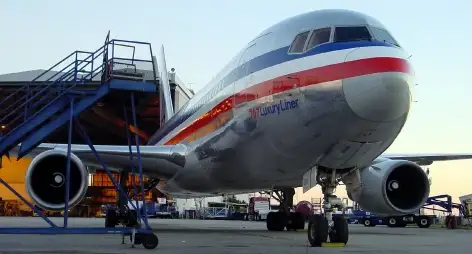
For all his misgivings about his airline’s takeover by US Airways, American chief Tom Horton was all smiles at the February 14 news conference where he and US Airways chief Doug Parker confirmed the two carriers’ plans to merge.
Indeed, $20 million is a lot to smile about. That’s the amount Horton was promised when the deal closed. Plus a lifetime of unlimited free first-class travel on American. Plus an office and support staff for two years.
But this week, the same bankruptcy judge that signed off on the overall merger plan in March ruled that Horton’s $20 million severance payment couldn’t stand.
The judge’s ruling turned on a 2005 amendment to the bankruptcy code that limits any one employee’s severance to no more than 10 times the severance paid to an average employee, not specifically on the amount Horton was awarded, which struck some as laughably outsized.
But that limit only applies to companies operating under bankruptcy protection. Once American exits bankruptcy, the company’s board will be free to dole out severance payments as they see fit. And they’ve already signaled their intentions.
Horton may yet have reason to smile.
Merger Cheat Sheet
- The new company will retain the ;American Airlines name and be based at American’s Ft. Worth headquarters.
- US Airways chief Doug Parker will be the new CEO. American chief Tom Horton will be named chairman of the new board and remain in that position until the spring of 2014 when the company’s first annual shareholder meeting will be held. When Horton departs the board, Parker will assume his position as chairman.
- American’s creditors would own around 72 percent of the new company; US Airways shareholders would get the rest.
- Based on 2012 results, the new company would have generated $38.7 billion in revenue.
- The merger expects to generate around $1 billion in combined extra revenue and cost savings for the new company.
- The new company will be valued at around $11 billion.
- Combining the third- and fifth-largest U.S. carriers will create the world’s largest airline, in terms of passenger traffic.
- Prior to any post-merger rationalization, the two airlines will have around 94,000 employees, 950 planes, 6,500 daily flights, and nine major hubs (American: Dallas, Miami, Chicago, Los Angeles, New York; US Airways: Phoenix, Philadelphia, Charlotte). Although the carriers promise to maintain all current hubs, Phoenix and Philadelphia are likely to be downsized in the post-merger rationalization.
- The new American will be a member of the oneworld alliance, not the Star Alliance.
- The merger is subject to review and approval by U.S. regulators. That shouldn’t be a problem since there is relatively little overlap between the two airlines’ networks.
- The actual merger won’t happen overnight. United and Delta required five and seven months respectively to secure the necessary approvals for their mergers.
- It was 22 months after their merger closed before United and Continental finally merged their frequent flyer programs. Expect a similar post-close interval before American and US Airways consolidate their programs.
- Comparisons between American and US Airways’ current mileage programs are probably moot since there’s a high likelihood that an entirely new revenue-based program (like Southwest’s) will be introduced to replace both programs.
- After the merger, 83 percent of U.S. domestic air traffic will be in the hands of just four airlines (American 26 percent, United 19.3 percent, Delta 19.2 percent, Southwest 17.3 percent).
Reader Reality Check
Is $20 million fair and reasonable severance for an executive who allowed his company to be acquired in a hostile takeover?
This article originally appeared on FrequentFlier.com.
We hand-pick everything we recommend and select items through testing and reviews. Some products are sent to us free of charge with no incentive to offer a favorable review. We offer our unbiased opinions and do not accept compensation to review products. All items are in stock and prices are accurate at the time of publication. If you buy something through our links, we may earn a commission.
Related
Top Fares From
Today's Top Travel Deals
Brought to you by ShermansTravel
Shop and Save with Country Inns...
Patricia Magaña
 Hotel & Lodging Deals
Hotel & Lodging Deals
$229 -- Chicago: Discounted Rates and...
Francesca Miele
 Hotel & Lodging Deals
$229+
Hotel & Lodging Deals
$229+
$188 -- Honolulu: Save on Oceanview...
Abigail Lamay
 Hotel & Lodging Deals
$188+
Hotel & Lodging Deals
$188+



